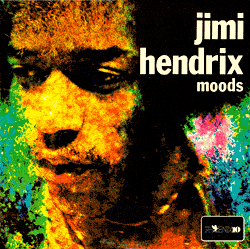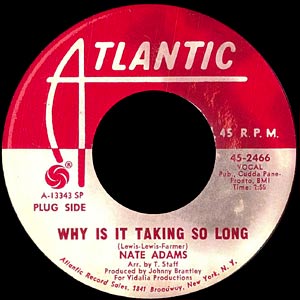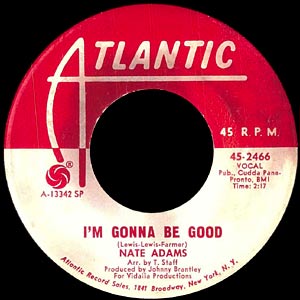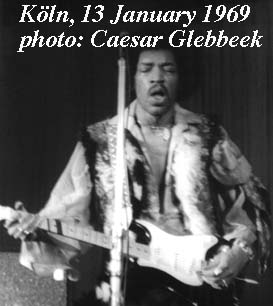se las comparto, obviamente esta en ingles:
http://www.earlyhendrix.com/youngblood-menu-fakes
LONNIE YOUNGBLOOD
FakesListed here are tracks that have appeared on albums claiming to be Hendrix or Youngblood/Hendrix material, but in reality do not contain any involvement by Hendrix.
These can be roughly divided into four categories:
1. Re-worked songs
2. New (Herman Hitson) songs
3. "One channel" songs
4. Miscalleneous songs
Most of these "fake" tracks have appeared under several different titles, I've tried to list them here with their real titles (if known) and the titles they had on their first "Hendrix" release.
1. Re-worked songs
Miracle Worker
(Jimmy Norman)
wiped horns, drums, bass, lead guitar, rhythm guitar, clockenspiel
I'm Gonna Be Good [aka From This Day On](Marion Farmer, Edward Lewis, James Lewis)
wiped piano, wiped horns, drums, bass, lead guitar, rhythm guitar, congas
You Are Too Much For The Human Heart - version 1 [aka Human Heart]
(Lee Moses)
drums, bass, organ, lead guitar, rhythm guitar
You Are Too Much For The Human Heart - version 2 [aka Louisville](Lee Moses)
wiped vocals, drums, bass, lead guitar, rhythm guitar, organ
Feel That Soul (John Wesley)
drums, bass, lead gtr, rhythm gtr, organ
All Alone(John Wesley)
wiped vocals, drums, bass, lead gtr, rhythm gtr
So Called Friend (Jimmy Norman)
wiped horns, drums, bass, piano, rhythm gtr, lead gtr, mumblings "play the blues"
Girl So Fine (John Wesley)
drums, bass, lead gtr (w/ phasing effect), rhythm gtr, 2nd rhythm gtr, organ
Every Little Bit Hurts (unknown)
drums, bass, lead gtr, rhythm gtr, organ
You Say You Love Me [aka Freedom And You](John Wesley)
drums, bass, lead gtr, rhythm gtr, wiped vocals
John Wesley seems to be a pseudonym (or the real name?) of Johnny Brantley, a search in BMI brings exactly the same results for both names (and Johnny Brantley's name is given as "Brantley Johnny W").

RE-ISSUE FROM 1981 ON PHOENIX 10
These are clearly tracks that have been messed with. Several of these songs originally had vocals, horns or piano on them, and these have mainly been wiped. They can still be heard quietly in the background, probably because of leakage during the original recordings. After wiping some of the original instrumentation new, mainly vocal & guitar overdubs were added to the tracks in order to turn them into "Jimi Hendrix" recordings.
So far 4 original versions of these tracks have been found:
Herman Hitson
You are too much for the human heart (Lee Moses) / got that will (Herman Hitson) (Atco 6566) - 7"
Produced by Johnny Brantley, arranged by T.Staff
The fake "Human heart" is available in two versions, titled mostly either as "Human heart", "Let me go" or "Louisville". Both of these takes are versions of "You are too much for the human heart" composed by Lee Moses and recorded on 1 march 1968. The single is very rare, and quite popular in soul collecting circles. Originally released in 1968, it was re-issued in 2000 on a Kent -label compilation cd "Sanctified Soul" (CDKEND 180).
Both "fake" takes sound quite different to the single track, but the song is clearly the same, and on one of the takes faint vocals can be heard. The vocals are extremely low, but when you compare them to the single version you are able to match bits of the lyrics. The fake "Human heart" has a much slower tempo compared to the Hitson single, so it's a different take, not the 45 take with overdubs. Also, "From this day on" features congas very similar to "Yes you did" by Hitson.
At least three singles were released by Hitson involving Johnny Brantley and / or Lee Moses:
Herman Hitson
You are too much for the human heart (Lee Moses) /
I got that will (Herman Hitson) (Atco 6566) - 7"
Produced by Johnny Brantley, arranged by T.Staff
Herman Hitson
Yes you did (Marion Farmer, Edward Lewis, James Lewis) /
Better to have loved (Marion Farmer, Edward Lewis, James Lewis) (Minit 32072) - 7"
Produced by Johnny Brantley, arranged by T.Staff
Herman Hitson
Show some sign (Herman Hitson) / She's a bad girl (Bobby Fears, Lee Moses) (Minit 32096) - 7"
Produced by Johnny Brantley, arranged by Lee Moses
Sam Williams
Miracle worker (Jimmy Norman) / So called friend (Jimmy Norman) (Uptown 742) - 7"Produced by Johnny Brantley
"Miracle worker" is the same basic song as the fake track "Miracle worker", this is the same take with vocals & horns removed and guitar overdubs added. The fake "So called friend" is an alternate take of the Sam Williams version with horns & vocals wiped and guitar overdubs added. Johnny Brantley also produced a version of the song cut by Billy LaMont.
Nate Adams
Why Is It Taking So Long / I'm Gonna Be Good" (ATLANTIC 45-2466) - 7"Produced by Johnny Brantley, arranged by T.Staff
“I’m Gonna Be Good” is actually the original version of “From This Day On" (it’s listed with both titles at www.bmi.com, released as a B-side to “Why Is It Taking So Long” on ATLANTIC 45-2466. I haven't heard the original track yet, but Gabe Monago who has this 45 and provided the scans below confirmed that it's indeed the original version of the fake track. Both sides were recorded in New Jersey on the 20th of October 1967. The full session included (with Atlantic master number listed first):
13341 Yes You Did
13342 I’m Gonna Be Good
13343 Why Is It Taking So Long
13344 A Fool For You
13345 Sophisticated Alabama Soup Bone
Rest of the tracks remain unreleased, although “Yes You Did” (from acetate?) is in the possession of at least one soul collector / dj. Atlantic logs don’t list any personnel. Herman Hitson released a version of "Yes You Did" on Minit 32072 and Marion Farmer his own version of “Sophisticated Alabama Soup Bone” on Tower 417. Neither track is one of the fake tracks.


All of the tracks on "Moods" seem to have correct credits, the song names & composers given are the same as for the original versions (at least on all the tracks that have been discovered so far), and for the ones for which the original version is still unknown the composers listed in the BMI database www.bmi.com match the label credits on "Moods". Why Brantley went through the trouble of wiping and overdubbing these tracks when they didn't have Hendrix on them to start with is beyond me, why not just make new recordings with some session musicians (well, in the following category he did just that...)?
2. New (Herman Hitson) songs
A mumblin' word
drums, bass, lead guitar, vocals mumblings "get on down" at end
Get downdrums, bass, lead gtr, mumblings "get down now etc."
Free spiritvocals,drums, bass, lead guitar)
House of the rising sundrums, bass, lead guitar, rhythm guitar, organ
Let the god singvocals, drums, bass, two lead guitars, organ
Suspicious (vocals "can you hear me knocking baby", drums, bass, lead guitar, rhythm guitar
Bring my baby backvocals "I love my babe", drums, bass, lead guitar, rhythm guitar
Voice in the wind
|vocals, drums, bass, two lead guitars
Hey Leroytwo vocals,drums, bass, lead guitar, organ
Good feeling
vocals "playing for the one in the wheelchair", drums, bass, lead guitar, rhythm guitar, organ
Let me thrill your soul
Something you gotvocals, drums, bass, lead guitar, rhythm guitar, organ
Hot trigger
These tracks are all Herman Hitson recordings. According to Hitson himself (visit his website at www.atlantanorthernsoul.com) these tracks were recorded for an album that was to be called "Free Spirit". The tracks were produced by Johnny Brantley and Lee Moses, with Moses also sharing lead vocals on "Hey Leroy".
Other than that the guitar & vocals are all by Herman Hitson. He does say that Jimi had a "small part" in "some of the material", but it's unclear what that part was and on which tracks if any as Hitson might have been thinking of other sessions than this particular one. The songs were eventually released by Brantley as Hendrix recordings...
"Let me thrill your soul" is a jam based on "Come on (pt. 1)" released by Earl King. "Hey Leroy" is based on "Hey Leroy Your Mama's Callin'!" released by Jimmy Castor in december 1966 (Smash 2069) 7". "Something you got" is a cover of a song originally recorded by Chris Kenner and later also by Curtis Knight & the Squires.
3. "One channel" songs
- Edda Mae
- Find Someone
- Be My Baby
- Nightlife
- Everything You Get
"Edda Mae" & "Find Someone" are originally tracks by the Ohio Players, the original versions of both were produced by Johnny Brantley.
"Edda Mae" is based on a track called "Find Someone To Love" released on the flip of the single "Over The Rainbow" (Capitol 2523), and on the lps "Observations In Time" (Capitol LP ST-192) and "First Impressions" (Trip TLP-8029). The Ohio Players track has the vocals wiped, has been mixed to the right channel and guitar (left channel) and piano (right channel) overdubs have been added. Thanks to Rob Pietrangeli for spotting this one.
"Find Someone" is based on a track called "The Man That I Am" released on the Ohio Players lp "Observations In Time" (Capitol LP ST-192). Same recipe with guitar overdubs in the left channel and the original track with vocals wiped on the right.
The rest of the tracks ("Be My Baby", "Nightlife", "Everything You Get") have been treated the same with a guitar track mixed high in one channel, and the rest of the track mixed low in another. The sources / artists for these are still unidentified but some of these sound quite similar to the Ohio Players tracks so that is a possibility, in any case all original versions are very likely to be Johnny Brantley produced tracks. "Everything You Get" is mono, but sounds like it probably would have the same instrument separation as the others if it were stereo as the guitar is well above the other instruments and sounds very similar to the other tracks.
All of these fake tracks first appeared on the LP "Kaleidoscope" on Nutmeg NUT-1003 released in 1982.
4. Miscalleneous songs
- Jimmy Norman: Gangster Of Love
- Billy LaMont: Young Generation
- Unknown: You Got It
- Gloria Barnes?: It's Gonna Take A Lot To Bring Me Back Baby [Gonna Take A Lot]
These songs also pop up on various "Hendrix" albums, these don't fit the description of the songs in the previous three categories.
Jimmy Norman: Gangster of love (Johnny "Guitar" Watson)
This song was released by Jimmy Norman as a single "Gangster of love (part 1) / Gangster of love (part 2)" on JOSIE 45-994 in or shortly after march 1968, arranged by Ed Bland, produced by Johnny Brantley for Vidalia Productions. Original version of this song (also known as "Love bandit") was recorded (and composed) by Johnny "Guitar" Watson, produced by Bumps Blackwell, and released on Keen Records in 1958. This recording seems to have wah wah on the guitar, so that automatically rules out Hendrix, as (once more with feeling) the effect wasn't available until 1967.
Billy LaMont: Young Generation
Peter Strömbäck spotted what seems to be either the original version or another alternate take of this track called "Row Your Boat". The song is included on a (apparently digital download only) compilation "Billy LaMont - Sweet Thang: Fine R&B Sides". The track as included on the compilation has been taken from vinyl, I have been unable to find any original 45 release for this track or indeed any reference to it at all other than this compilation. Either the 45 is extremely rare, promo only or an unissued acetate or it was originally released under a different title. We do however now have two versions of the same song with different lyrics. The female backing singers on "Young Generation" are still singing "row your boat" and the LaMont's original "Row Your Boat" -vocals are only partially wiped and still occasionally audible so the "Row Your Boat" -version definately predates the "Young Generation" -version.
Unknown: You got it (?)
Sounds like late 70s, definately no Hendrix involment on this.
Gloria Barnes? : It's Gonna Take A Lot To Bring Me Back Baby
George Scott: I'm a Fool For You(Daisy Holland, Richard Poindexter)
An unknown female vocalist & George Scott both recorded this song also done by the Manhattans and the Icemen. The single version by The Manhattans "It's gonna take a lot to bring me back / Give him up" (Deluxe #115) was released around dec 1969 / jan 1970. The Icemen's version was released on "It's Gonna Take A Lot To Bring Me Back Baby / It's Time You Knew" (OLE-9 1007/8).
The female vocalist probably is Gloria Barnes who also recorded a complete lp for Johnny Brantley, "Uptown" (Maple ????). The take with female vocals was first released on “The Genius of Jimi Hendrix” in 1974 accompanied by genuine Brantley & Scene Club tracks.
The same backing track was also used for a version by George Scott, re-titled "I'm a Fool For You" with new lyrics (but with the backing vocalists still singing "to bring me back baby"!). This was released on the lp "Find Someone To Love"(Maple 6008). The guitar is much clearer on the George Scott version and does sound more like it could be Hendrix, I need to re-asses this track at some point, until that time it's still listed as a fake though.





 Hendrix y Dylan, más liados que nunca.
Hendrix y Dylan, más liados que nunca.




 Nora Rose Moore, abuela de Jimi Hendrix, en un momento de la entrevista.
Nora Rose Moore, abuela de Jimi Hendrix, en un momento de la entrevista.
 Jimi Hendrix y Bob Dylan, unidos por una gran canción.
Jimi Hendrix y Bob Dylan, unidos por una gran canción.
 Jimi Hendrix, inspirado.
Jimi Hendrix, inspirado.












